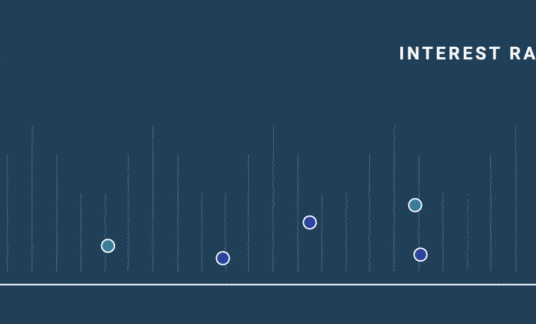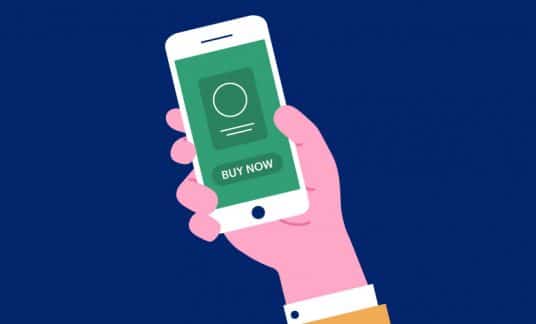Different types of content marketing can help you achieve different objectives. Here are the top 17 tools for your content campaigns:
- Original research
- Blog posts
- Videos
- Articles
- Infographics
- Newsletters
- E-books
- White papers
- Memes
- Tutorials
- Checklists
- Interviews
- Podcasts
- Reviews
- User-generated content
- Testimonials
- Influencer-promoted content
We’ll explain why each of these different types of marketing content is popular, what they can do for your brand and how to deploy them.
1. Original Research
If you possess the means to do it, publishing content with original research and data can be a powerful promotional tool. An eMarketer survey of U.S. marketers found that among content types for content marketing, original research and data were ranked as the most effective.
One reason research generates such good results is that creators of blog posts and other content frequently quote research statistics, raising the odds of your research getting linked or shared and bolstering your traffic and search-engine rankings.
Content creators like to quote research statistics because this provides objective data and authority to their content. This makes research great for search engine optimization (SEO). It also can help position your brand as an authoritative resource.
You can draw from various sources of data to produce original research. These include:
- Your own internal data from your analytics tracking
- Surveys of your customers
- Research outsourced by your company to providers such as polling companies
- Public data published by government agencies, such as the Bureau of Labor Statistics, which you can analyze to create an original presentation
You can publish your research as a report in its own right. You also can incorporate it into some of the other types of the content discussed here.
2. Blog Posts
Blog posts are among the most popular types of content in digital marketing because they get great results. Blogs offer an excellent way to improve your search-engine rankings for several reasons.
When ranking blog posts, search engines put a higher weight on keywords placed in strategic locations such as title tags. You also can use blogs to include keywords beyond your main keyword targets, helping you diversify your SEO efforts.
Quality blog content also encourages other sites and social media users to link to your site, bolstering your SEO. You also can generate traffic by sharing blogs with your own email and social media followers.
Creating good blog content starts with market research. Begin by identifying your target audience, topics that interest them and relevant keywords that generate high volume. You can then create content incorporating these topics and keywords.
-
Tip
For best results, create a posting schedule so you are producing and sharing content on a consistent basis.

3. Videos
Videos are a powerful multimedia tool for content marketing. Indeed, video accounted for 75% of all Internet traffic in 2018, and that number will rise to 82% by 2022, according to Cisco Systems. Producing videos can help you grab a share of this traffic and generate social media views, likes and shares.
Videos get 59% more engagement than other types of posts on Facebook, according to research by Buffer. A Wyzowl survey found that 87% of marketers say video increases traffic to their site.
These numbers illustrate why video can be one of the best content types for marketing your brand on social media to build awareness, attract followers and increase traffic.
When designing video content, you can use a number of different formats. Popular formats include:
- How-to tips
- Product demonstrations
- Product reviews
- Entertaining or humorous videos
- Brand videos that discuss your company
- Event coverage
- Interviews
- Case studies
As with blog posts, videos can be optimized for search engines. Factors that can influence your SEO performance include your title, file name and video description. Also, keep in mind videos can be hosted on your site or link back to your site to drive traffic.
4. Articles
Articles represent another important content marketing type. Akin to blog posts but longer, articles can be deployed like blogs to target keywords and attract backlinks. Articles highlighting news relevant to your target market can prove particularly useful for grabbing traffic, especially if your content lends itself to optimization as a Google News item.
You can create an article using the same techniques you would use to create a blog post. Use marketing and keyword research to help you develop article topics. Google News uses several criteria to rank news content:
- Relevance
- Prominence
- Authoritativeness
- Freshness
- Location
- Language
- Individual user interests and usability
Build keywords and language into your news content to meet these criteria. For instance, if you’re trying to create content particularly relevant to readers in 2021, you might include “2021” as a keyword in your title. You can search under your topic under Google’s “news” tab to gain insights into what keywords competing sites are using.
5. Infographics
Infographics can lend visual appeal to your content marketing campaigns. An infographic provides an easy way for audiences to digest statistics and facts. This makes using infographics an excellent way to promote your brand on social media. You also can embed infographics in other types of marketing content, such as blog posts and articles.
You can use infographics to repackage information from other sources, such as original research reports. An effective infographic depends heavily on good design, so use an experienced graphic designer. Include sources in your infographic to add credibility. When promoting your infographic, reach out to other influencers who have an audience with your target market and invite them to share your content with their followers.
6. Newsletters
Digital and physical newsletters provide a means for sharing content to build relationships with leads who are already in your databases, such as email subscriber lists and physical mailing lists. You also can offer newsletters as an incentive for audiences to opt into your subscriber lists.
You can save time creating a newsletter by collecting, excerpting or introducing content from other sources such as blog posts and articles. You also can create content exclusive to your newsletter to give it a distinct value and make it more attractive to audiences.
7. E-Books
An e-book resembles a blog post or article in format but covers a topic at greater length and with more detail. This gives e-books greater authority and value. You can use e-books to build your brand’s authority in your subject niche. You also can use them as an incentive to encourage opt-ins to your subscriber lists. E-book titles and landing pages can further serve to promote your search engine rankings by incorporating target keywords. Some e-books have enough value that they are sold for profit.
You can compile an e-book using the same techniques you would use to create a blog or article. However, you will need to develop your topic in greater detail than you would in those formats. One way to do this is by combining several blog-length topics under a broader heading that incorporates them under a single topic. To leverage your e-book for SEO, use a title that incorporates a keyword phrase of interest to your target audience.
8. White Papers
A white paper is essentially an e-book with a business audience in mind. It’s part of an approach known as business-to-business (B2B) marketing, in contrast to business-to-consumer (B2C) marketing. A white paper positions your brand as an authority in your field. It can be used to build your credibility with a B2B market, to promote opt-ins or to bolster your SEO efforts. A white paper containing valuable research or tips may even command a high commercial value.
You can write a white paper using the same techniques you would use to write an e-book. Gear your content toward establishing your brand as a thought leader in your industry. A white paper often incorporates original research or case studies. You can use visual aids such as infographics, charts and graphs to enhance the paper.

9. Memes
A meme provides another great visual tool for promoting your brand. The nature of memes makes them popular for sharing on social media, providing you an opportunity to reach audiences on platforms such as Facebook, Instagram and Twitter. Memes serve well for building brand awareness and positioning how your brand is perceived by your target audience.
A good meme should combine an attention-grabbing graphic with a short, witty caption. For graphics, you can use original images or repurpose existing viral images, which often appear in multiple versions with different captions. For captions, you only have a short space to get a message across, so make every word count. Study trending memes for inspiration.
10. Tutorials
Consumers and business leaders frequently seek how-to information to help them solve practical problems or use product features. Providing this information in the form of tutorials can help you generate traffic, build brand authority and engage customers.
Tutorials can take various forms. Some tutorials are text-only. Others use video to add a human element or visual demonstration. A carousel feature on your website or on a platform such as Instagram allows you to depict instructional steps as a series of slides. You also can use software such as WalkMe to create interactive tutorials.
11. Checklists
A checklist provides another useful way to present how-to information as a series of brief, step-by-step instructions. Checklists allow audiences to absorb information quickly in a practical way that can easily be put into application.
You can present checklists as content in their own right or incorporate them into other types of content such as blog posts and memes.
A good checklist should:
- List all essential steps
- Organize steps in a logical sequence
- Describe each step concisely
- Use action verbs to express each step as a call to action
Checklists can be fleshed out with accompanying graphics or examples.
12. Interviews
Publishing an interview with a recognized name familiar to your target market can enhance your brand’s authority. It also can help generate traffic from your interviewee’s followers. You can publish interviews with business leaders, business partners or customers. For instance, you might showcase the story of a customer who used your product and got good results.
Interviews can be published in different media. You can publish an interview in written form, as a video or an audio clip. You also can take a video published in 1 format and repurpose it in a different format.
13. Podcasts
Podcasts provide an audio tool for reaching audiences. Delivering a podcast on a regular basis can help you build your brand’s authority and grow a dedicated following. Podcasts can help you attract niche audiences from platforms that distribute audio content.
An effective podcast should deliver your target audience valuable, unique content relevant to their interests. You can use market research to develop ideas and SEO keywords for podcasts, just as you would for a blog post. Invite a known guest on your podcast to expand your audience reach to include your guest’s audience.
You can publish your podcasts on platforms such as Apple Podcasts and Google Play. You also can repurpose podcasts for video platforms such as YouTube by simply adding a still image or series of images to your audio.
14. Reviews
Online shoppers frequently search for product reviews to help them make buying decisions or decisions on what free options to use, such as free software options. You can capture traffic from this type of audience by providing informative reviews of products relevant to your niche. This also can help establish your authority in your niche.
When reviewing products, establish criteria that you can use for comparison purposes, such as features, applications and prices. To make your review practical, include a table summarizing your review’s main features. You can publish your review as a web page in its own right or as part of a blog, e-book or white paper.
15. User-Generated Content
You don’t have to create content on your own. Content from your followers and customers also can be used to promote your brand. User-generated content can engage audiences because they’re involved in its creation. This can be a great way to promote your brand on social media.
There are several ways you can curate user-generated content. One way is to retweet comments from followers on your Twitter feed. You also can invite followers to submit content such as photographs or videos. Holding a contest can provide an incentive for followers to submit quality content.
16. Testimonials
Testimonials are another type of user-generated content. They perform a vital function on sales pages to persuade buyers of the value of your product. They also can be incorporated into other types of content such as blogs and videos to build your brand’s credibility.
You can collect testimonials on an ongoing basis as they are submitted by customers. To increase your testimonial database, actively build customer feedback requests into your standard operating procedures.
-
For Instance
You can make it a standard practice to send new customers a brief survey after they’ve been using your product for a month, asking permission to use their feedback for testimonials.
17. Influencer-Promoted Content
You don’t always have to publish your own content. If you can recruit partners, they can help you promote content that links back to your site or social profile. A partner who already has your target audience as part of their following can help you quickly build your social reach and web traffic. An influencer who vouches for you also can build your brand’s credibility and authority.
Selecting the right influencers is critical for creating influencer-promoted content. Look for partners who already have an audience with your target market but don’t represent direct rivals to your brand.
You can then reach out to them or their representative with a text message, email, telephone call or press release. Introduce yourself and explain why you think the influencer’s audience would be interested in hearing about you. In your approach, think in terms of how you can help your partner provide value to their audience in a way that mutually benefits everyone involved.
For instance, a company that makes a diet product might approach a fitness guru offering information about a new approach to weight loss that might be of interest to their followers.
Choose the Right Content Tools to Meet Your Marketing Goals
Each of these tools can serve one or more distinct functions in your overall marketing strategy. A complete strategy should use a mix of tools that meets your brand’s marketing objectives.











